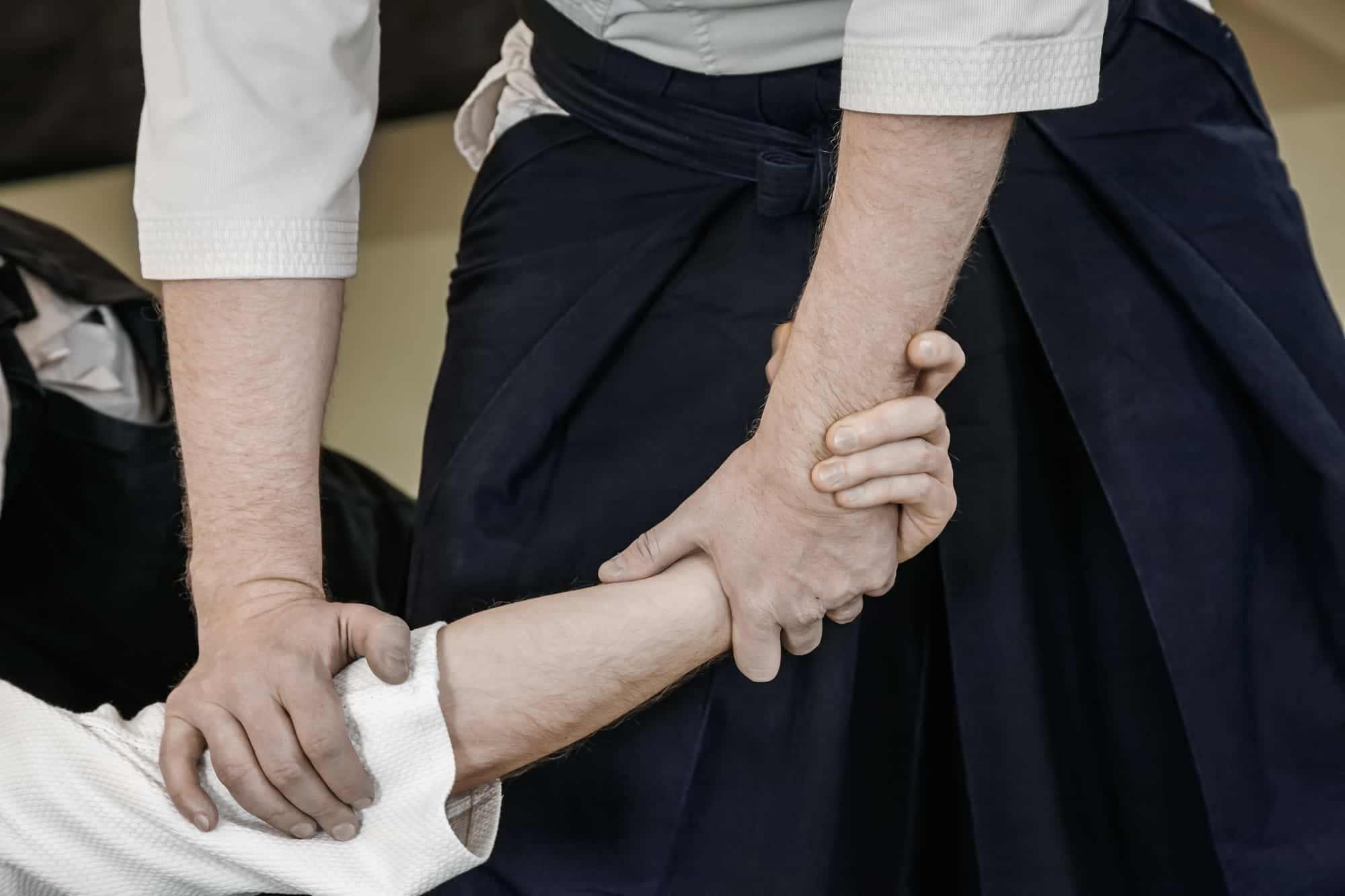Style vs style match ups are always a heated debate in the martial arts world and Aikido vs Muay thai is one such match up that many like to discuss and argue.
My philosophy is that all martial arts offer value in their unique way so all styles are good.
And when it comes down to a real fight between two different styles – often it is the heart of the fighter rather than the style they practice that determines who will win.
That being said, when it comes to Aikido vs Muay thai there are important lessons anyway can take away from such a style match up.
Whether you are debating which style to choose to learn and train or are wondering who would win in a street fight, we look at these questions and discuss, realistically this style vs style match up.
This post will also discuss:
- Which is better for self defense
- Which is better for weight loss and getting in shape
- Who would win in a real fight
But first let’s look at the characteristics of the two styles which is a major factor in their different approaches to combat and fighting as well as training methods.
Characteristics of Aikido vs Muay Thai Characteristics
Aikido is a Japanese martial art that was developed by Morihei Ueshiba in the early 20th century.
The origins of Aikido can be traced back to Ueshiba’s training in a variety of martial arts styles as well as his spiritual and philosophical beliefs.
The creator of Aikido, Ueshiba, officially named his martial art, ‘Aikido’ in 1942, and this translates to mean “the way of harmony with the spirit”.
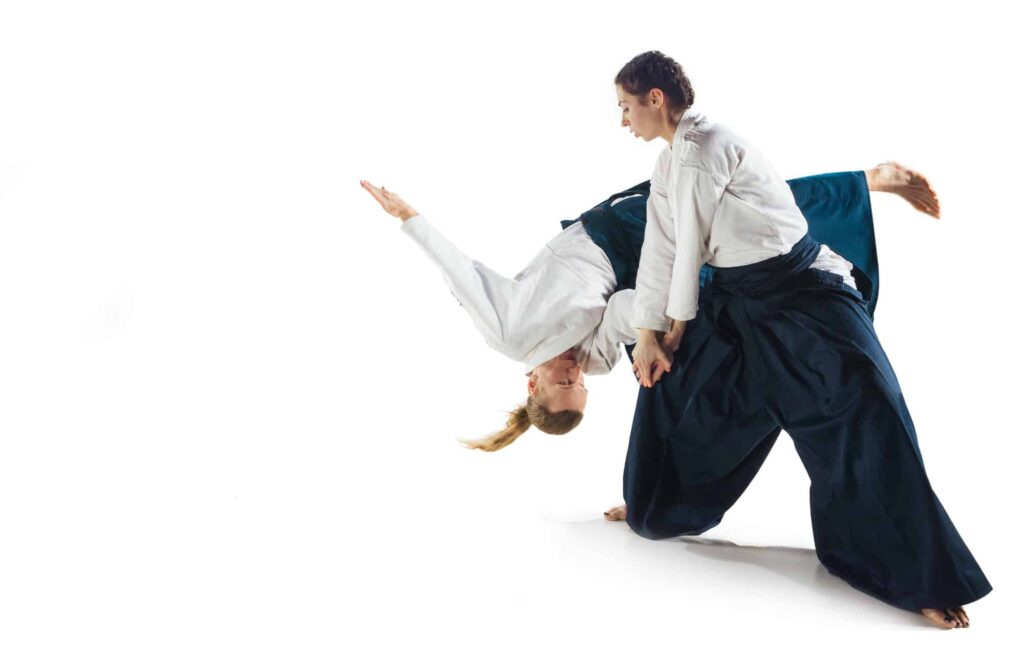
Muay Thai is an ‘older style’ focussed on fighting
So while, Aikido was only really officially named in 1942, muay thai has been around for much longer and can trace its origin back to the warring periods of the Ancient Siam Kingdom of Ancient Thailand.
Muay thai is also focussed on fighting and the most effective techniques for hand to hand combat.
Aikido translates as – “the way of harmony with the spirit”
Muay Thai – is known as the Art of 8 Limbs.
So in terms of characteristics, it is obvious that Aikido does not have a sole focus on fighting but includes much more a spiritual and philosophical side, in comparison to muay thai.
Force and Strength vs ‘Harmony’ & ‘Blending’
Muay thai is known as a brutal combat art.
Training sessions are known to be gruelling, in order to develop strong and well conditioned fighters, through a lot of running, pushups, pullups and situps as well as clinch sparring and hard rounds on heavy bag and thai pads.
All this is to develop strong fighters with good endurance.
Aikido on the other hands focusses on using minimal strength and instead train to rely on precise timing, body positioning and efficient use of energy.
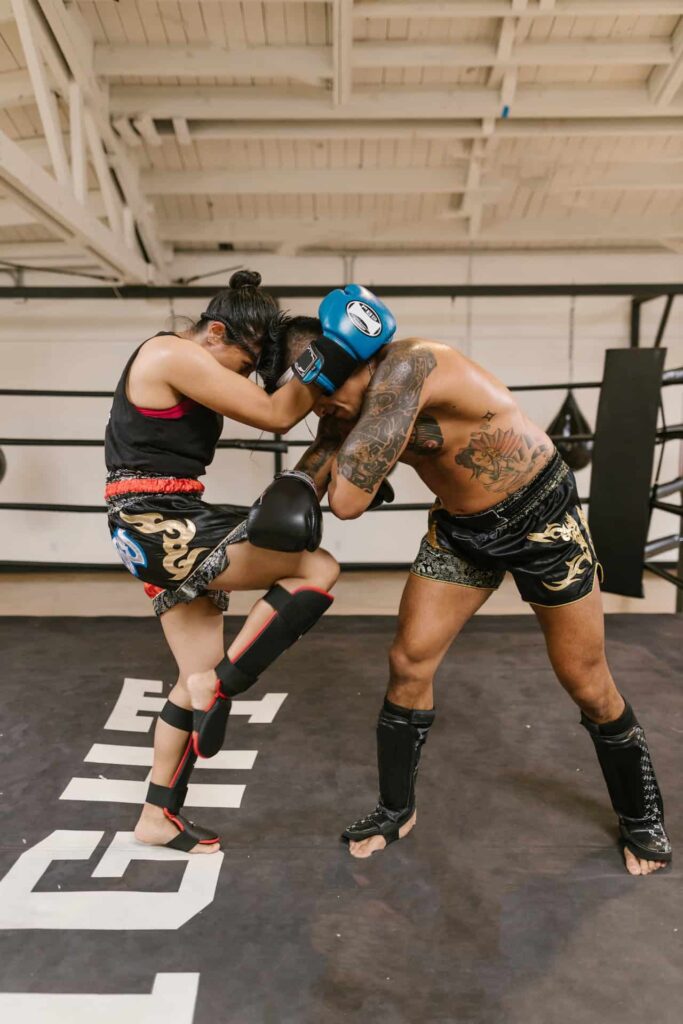
Combat Sport vs Martial Art
Muay thai is a combat sport with rules and regulations governing how fighting competitions are to be held with weight classes and protective gear such as gloves, mouth guards and groin guards.
There are timed rounds in muay thai (usually Rounds of 3 minutes) and matches take place in essentially a boxing ring.
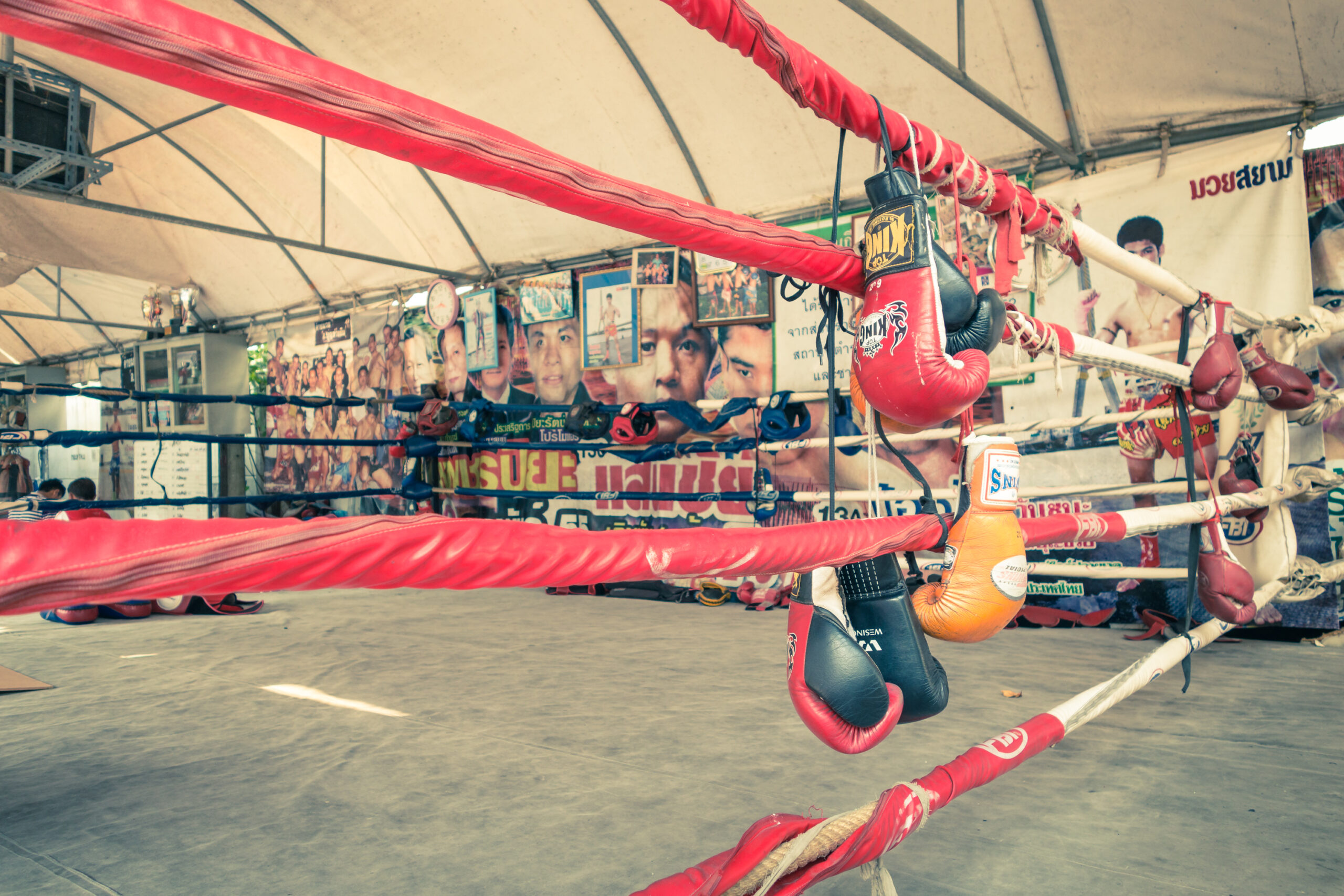
Muay thai has taken on many rules from Western Boxing Queensbury rules to become a well established and popular combat sport in Thailand and around the world.
Aikido, on the other hand does not include competitions and is by no means a combat sport.
Aikido includes Weapons
While the core of Aikido training focuses on unarmed techniques, practitioners also study the use of traditional Japanese martial arts weapons.
The most commonly taught weapons in Aikido are the wooden sword (bokken), the wooden staff (jo), and the wooden knife (tanto).
Training with weapons serves several purposes in Aikido.
It helps practitioners understand the principles of timing, distance, and movement in a different context. Weapons training also enhances body awareness, concentration, and coordination.

Muay thai, on the other hand, only utilizes the body’s 8 limbs as weapons and does not undergo and training at all that includes weapons.
However muay thai does originate from the battlefields arts of muay boran and krabi krabong which do include weapons training.
Joint locks
Joint locks are an integral part of Aikido techniques.
In Aikido, joint locks, known as “kansetsuwaza,” are used to control an opponent by applying pressure or manipulation to their joints, typically the wrist, elbow, or shoulder.
These techniques leverage the principles of leverage, timing, and blending to redirect an attacker’s energy and neutralize their aggression.
Muay thai on the other hand does not include the use of any joint locks as these are illegal techniques in muay thai compeitions.
Aikido vs Muay Thai which style wins?
As stated early on in this post, in a real no holds barred fight, it really comes down to the heart of the fighter rather than any particular style as to who would win.
And really a style vs style competitive ‘fight’ between Aikido and Muay thai would be difficult to stage.
Which rules would be used to compete under?
Aikido relies heavily on joint locks which are illegal in muay thai matches and using primarily kickboxing/boxing type rules would take out an Aikido fighter’s major weapons of joint locks.
Also strikes in Aikido focus on the body’s vulnerable areas and can be illegal under Queensbury rules which muay thai draws heavily on for competition regulations.
MMA rules again would be difficult to fight under as both style do not train to fight on the ground.
Which is Better for self defense?
There are definitely advantages that both styles have when it comes to self defense.
The muay thai clinch is very useful in self defense and can be used to neutralize an attacker is used well. As well the muay thai clinch can be used to cause heavy damage with knees, elbows and trips and throws as well.
In Aikido one major advantage it has over muay thai when it comes to self defense is weapons training.
Muay thai does not deal with weapons at all.
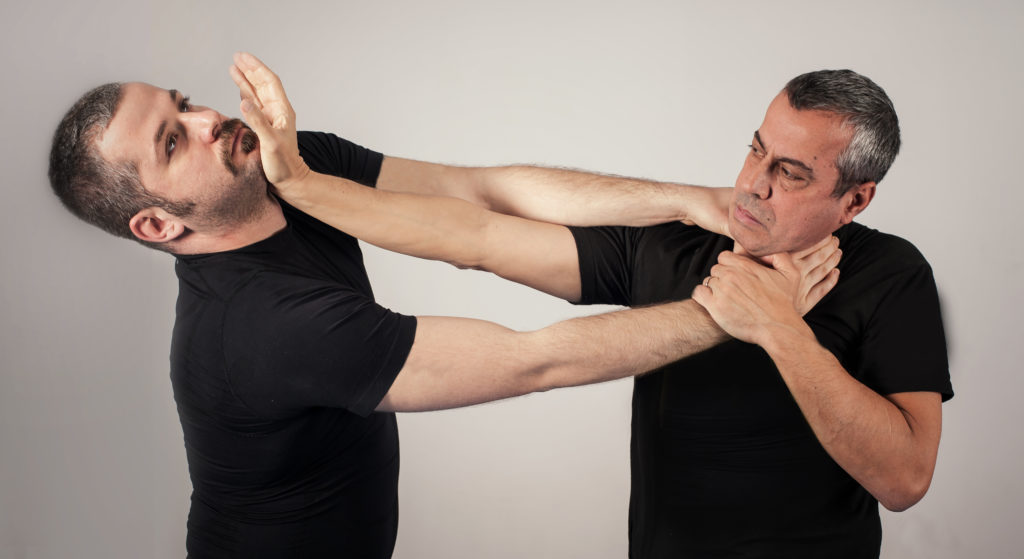
And in self defense an attacker could have a weapon or pick up anything nearby to be used as a weapon.
Hard sparring in muay thai is one aspect that also can benefit muay thai in self defense as you are trained to deal with oncoming attacks and stay calm.
Aikido on the other hand focuses more on kata and cooperative partners which does not always translate well to self defense situations.
My personal recommendation would be to learn both styles as both have much to offer.
If possible try both muay thai and Aikido and see which style you like better or which better suits your taste.
You should also note that the particular instructor or teachers can also have an influence of which style you prefer so there is no harm in trying out both.
Which is better to get in shape and lose weight?
Muay thai would be the better style to train if weight loss and getting shape is your goal.
Aikido, on the other hand, is generally less intense in terms of physical exertion compared to Muay Thai.
Aikido training often focuses on developing proper body alignment, balance, and technique rather than intensive cardio workouts.
While Aikido can contribute to overall fitness and flexibility, it may not have the same calorie-burning potential as high-intensity activities.
The fast-paced nature of Muay Thai training can lead to a high calorie burn and increased cardiovascular fitness.
The combination of dynamic movements, punches, kicks, and knee strikes engages various muscle groups, helping to build strength and endurance.
As a result, regular training in Muay Thai can contribute to weight loss and improved overall fitness in comparison to AIkido.

